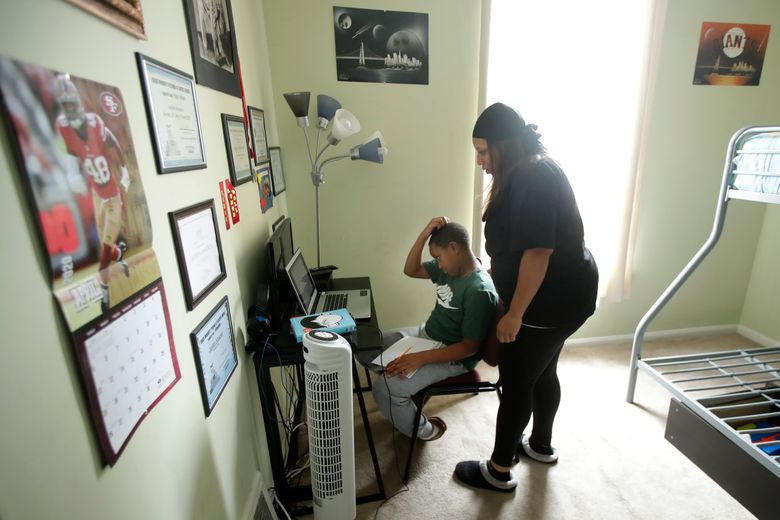
Inequality of distance learning is a pandemic in the waiting
by Adam GishOn March 11, 2020, when Seattle Public Schools announced closures due to COVID-19, teenage joy at Garfield High School mingled with an ominous unknown. Five days later, a new journey began: Educating the district’s 50,000 students — from a distance. This unfinished tale lacks one thing: an ending in which one of the most prosperous societies in history provides the essential 21st century tools that students and teachers alike will need to succeed in this new normal.
When I found out some of my students lacked an electronic device to continue their education, parent volunteers stepped in. Donated devices arrived with volunteers to deliver them, and soon almost every student had a device. And I breathed a sigh of relief; but like a state that too quickly reopens from lockdown, I quickly recognized a new wave coming. Just having access to computers failed to account for obstacles like internet access, working knowledge of the device, the ability to work academically online, motivation, and the list goes on.
My colleagues and I also confront numerous issues: attendance problems, ignorance of available resources, hours spent on tasks formerly requiring minutes, the design of inclusive and interesting lessons, and the frustration with a learning curve that seems, at times, vertical. We are not sitting idly by but continue to do our best to continue educating children; however, as the COVID-19 pandemic evolves, the magnitude of the collective effort that is needed to address this new reality is beyond anything any of us have ever witnessed.
At Garfield, our racial, cultural, linguistic, and socioeconomic diversity is the perfect Petri dish to measure this new crisis: guaranteeing all students access to technology. While the wealthy and the homeless share the same school building in “normal” times, COVID-19 has ripped down the wizard’s curtain and revealed the socioeconomic hardships many students struggle to overcome outside of school.
Come September, if these students still lack access to adequate technology, our school system will have failed them. Can anyone be expected to learn online without an internet connection at home?
The solution to this problem does not require rocket science, simply an acknowledgment of two facts: first, Seattle’s technological power and vast financial resources; second, the need to shift rhetoric into action.
I ask Seattle Mayor Jenny Durkan, Seattle Public Schools Superintendent Denise Juneau, city officials, Amazon, Microsoft, Boeing, Comcast and others, to pledge the following: Before the school year begins, virtual or not, we will ensure that every Seattle school district student (from middle school until graduation), every teacher, and every support staff member has access to an approved educational computer, high-speed internet access in their homes, and adequate technological support. And if anyone lacks one or more of these essential educational items, we will provide for them.
Humans are social beings. We need each other to survive. Our tradition of public education in this country has always been a source of pride, not least because of its purported role as “The Great Equalizer.” Right now, if we cannot rise to this challenge, if we open schools in the fall with the status quo in place, the toll inflicted on many students and our entire community will become Seattle’s own moment of infamy.
Adam Gish is a language arts teacher at Garfield High School in Seattle.